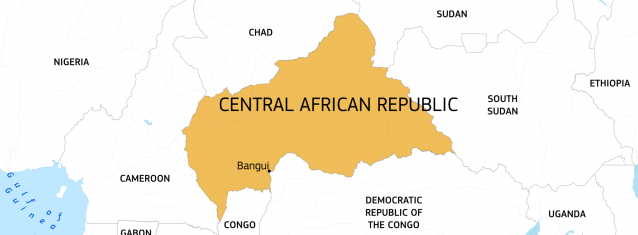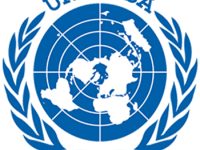News
ECHO Factsheet – Central African Republic
ReliefWeb Press Release

(Source: ECHO)
ARAC International Strategic Communications -
Since the December 2020 presidential elections, the Central African Republic (CAR) is torn by violence opposing armed groups against government forces. As of summer 2022, the situation remains extremely volatile, as serious human rights and international humanitarian law violations are committed by all parties.
While some areas are conducive to development initiatives, almost no region is spared by the violence. Prospects for the resumption of basic public services and income opportunities are slim. Many Central Africans still depend on humanitarian assistance for their basic survival.
While some areas are conducive to development initiatives, almost no region is spared by the violence. Prospects for the resumption of basic public services and income opportunities are slim. Many Central Africans still depend on humanitarian assistance for their basic survival.
What are the needs?
The protracted humanitarian crisis is one of the world’s most neglected.Many years of fighting resulted in a situation in which more than half of the population needs humanitarian assistance (3.4 million people), an increase of 10% compared to last year. The population is constantly exposed to and displaced by violence by all parties to the conflict.
The protection of vulnerable internally displaced people (IDPs) remains urgently needed. It is essential for women and girls, increasingly exposed to sexual violence, and unaccompanied or separated children at risk of forced recruitment. According to the last Multi-Sectoral Need Assessment, more than 1.4 million people need gender-based violence intervention, including prevention, risk reduction, and other support.
The number of internally displaced persons decreased in 2022, from 692,000 to 518,000 people between January and November 2022. However, the situation remains volatile regarding internal displacements, and it differs significantly among localities. Moreover, on average, 32,000 people are forced to leave home each month and seek safety elsewhere in the country.
The Ukraine crisis exacerbates the economic instability in CAR. According to the Integrated Food Security Phase Classification (IPC), between April to August 2023, 3 million are likely to be in crisis and emergency levels (807,000 in emergency (IPC phase 4) and 2.2 million in crisis (IPC phase 3). This period coincides with the lean season.
The severity of the food insecurity will be mainly due to the projected increase in imported and local food prices due to increased transport and petroleum costs.
The CAR also remains one of the most dangerous countries for humanitarian workers. In 2021, the country registered 400 incidents. Last year, the country recorded 179 incidents directly affecting humanitarian workers on the front line.
The severity of the food insecurity will be mainly due to the projected increase in imported and local food prices due to increased transport and petroleum costs.
The CAR also remains one of the most dangerous countries for humanitarian workers. In 2021, the country registered 400 incidents. Last year, the country recorded 179 incidents directly affecting humanitarian workers on the front line.
How are we helping?
In 2023, the EU has allocated €20.5 million for humanitarian aid in the country.Last year, we mobilised €29 million in humanitarian aid. This included an indicative amount of €4 million from the Emergency Development Fund to address the food crisis following Russia’s war of aggression against Ukraine.
Our 2022 funding also included €3.6 million earmarked for education in emergencies programmes and €1 million for disaster preparedness actions
Besides education, EU humanitarian aid primarily focuses on covering the needs of the most vulnerable – uprooted people in the CAR and host communities – by providing them:
food assistance
emergency shelter
access to healthcare
water and sanitation
short-term livelihood and agricultural support
In addition, the EU supports actions that protect civilians. This includes the prevention of sexual violence, support to victims, and actions offering a protective and educational environment for children.
Some EU-funded projects are also helping to respond to the health crisis caused by the coronavirus pandemic by providing access to clean water and sanitation for vulnerable people.
With widespread violence and poor infrastructure, reaching people in need in the CAR is both difficult and dangerous. In this context, the EU funds the UN Humanitarian Air Service (UNHAS) that enables aid workers and assistance to reach places that are insecure and difficult to access. EU humanitarian funding also supports the security and coordination of humanitarian aid in the country.
The crisis in the CAR has an impact on its neighbouring countries. Over 740,000 Central African refugees are being hosted mainly in Cameroon, Chad, and the Democratic Republic of Congo.
Their prolonged stay puts pressure on the local host communities and their already limited resources. The EU delivers humanitarian assistance to both host communities and Central African refugees in Cameroon, Chad, and the DRC.
In addition, the European Commission is providing €100 million in humanitarian assistance to support the rollout of vaccination campaigns in countries in Africa with critical humanitarian needs and fragile health systems. At least €10 million of this funding will be supporting vaccination campaigns for the most vulnerable in West and Central Africa.
The crisis in the CAR has an impact on its neighbouring countries. Over 740,000 Central African refugees are being hosted mainly in Cameroon, Chad, and the Democratic Republic of Congo.
Their prolonged stay puts pressure on the local host communities and their already limited resources. The EU delivers humanitarian assistance to both host communities and Central African refugees in Cameroon, Chad, and the DRC.
In addition, the European Commission is providing €100 million in humanitarian assistance to support the rollout of vaccination campaigns in countries in Africa with critical humanitarian needs and fragile health systems. At least €10 million of this funding will be supporting vaccination campaigns for the most vulnerable in West and Central Africa.
Facts and Figures
* 3.4 million people in the CAR require humanitarian aid (OCHA, Global Humanitarian Overview 2022)* 741,000 Central Africans have taken refuge in neighbouring countries (UNHCR, Dec. 2022), and
* 518,000 people are internally displaced (UNHCR Nov. 2022)
* 3 million people will face acute food insecurity in 2023 (IPC, on projected period April 2023)
EU humanitarian funding:
* €20.5 million in 2023
* More than €261.5 million since 2014
ReliefWeb News and Press Release
Source: ECHO
Posted: 8 Feb 2023
Originally published:8 Feb 2023
========================================
ARAC International is a member of
UN OCHA Humanitarian Response
========================================
____________________________________________________________
ARAC International, Strategic Communications & Analysis
Global Security Analyst | Human Rights Consultant
Certified by the U.S. Institute for Diplomacy and Human Rights
Institute for Economics and Peace Ambassador
https:/iep.arac-international.org
more information: https://www.arac-international.org/2023/02/reliefweb-press-release-echo-factsheet.html
Liability for this article lies with the author, who also holds the copyright. Editorial content from USPA may be quoted on other websites as long as the quote comprises no more than 5% of the entire text, is marked as such and the source is named (via hyperlink).






